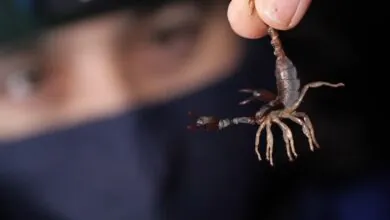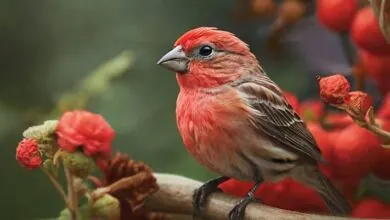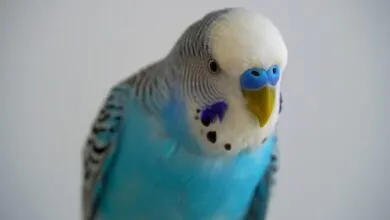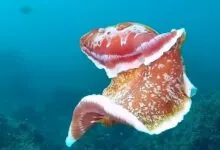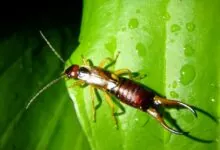Zebra Finch Bird: Inside Their Surprisingly Complex Social Life
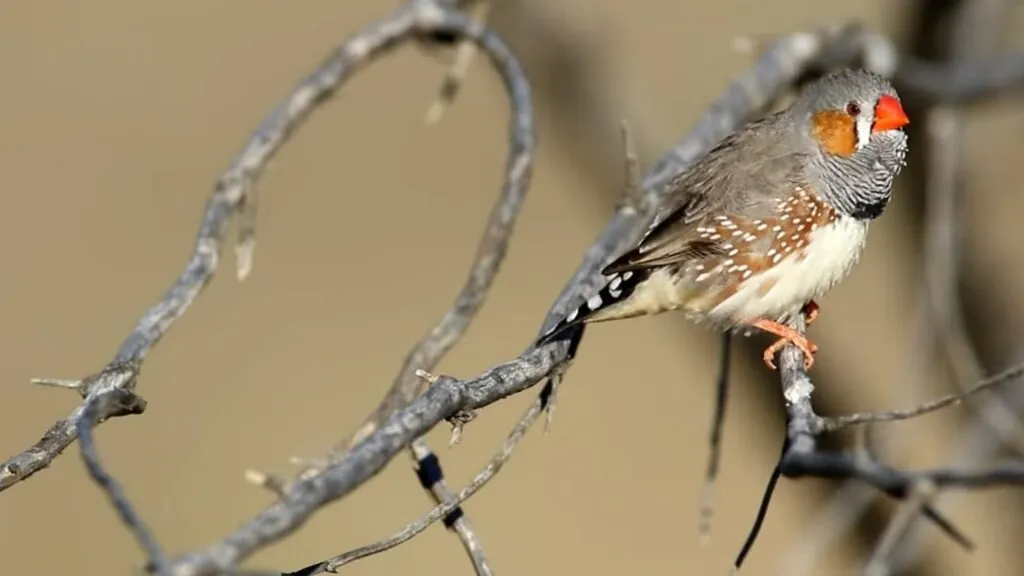
Parrots and peacocks, you may leave, because the zebra finch is ready to steal the spotlight! No need to be tricked by their petite size and astonishing stripes – these feathered bundles of energy hold a striking punch in terms of fascinating facts and hidden marvels. Here, we’re going to uncover the realm of zebra finch bird, unveiling everything from their inspiring songs to their unparalleled role in scientific research.
| Kingdom | Phylum | Class | Order | Family | Genus | Scientific Name | |
| Animalia | Chordata | Aves | Passeriformes | Estrildidae | Taeniopygia | Taeniopygia guttata |
Origin and Evolution
Evolutionary History
Touching upon the zebra finch evolution, fossil evidence proposes that their ancestral lineage branched off the Estrildidae finch family around 2.9 million years back. Further isolation within Australia after the Pleistocene epoch resulted in the two recognized species: the the Australian zebra finch (Taeniopygia guttata castanotis) and the Sunda zebra finch (Taeniopygia guttata).
Genetic Composition and Diversity
Of around 1.2 billion base pairs, the zebra finch has a comparatively small genome compared to humans – 3 billion. Notwithstanding the fact, genetic diversity within the species is astonishingly high, with over 1 million single nucleotide polymorphisms (SNIPs) present.
Environmental Adaptations
Speaking of zebra finch adaptations, they thrive in arid and semi-arid environments, encompassing savannas, grasslands and open woodlands. To cope with water scarcity, they’ve developed a plethora of adaptations, such as efficient salt excretion and the capability of extracting moisture from seeds.
Connection to human evolution
Research conducted on the zebra finch genome have spotlighted the genetic basis of bird song and vocal learn, which scientists perceive may share analogies with the evolution of human speech. Furthermore, studies on their social hierarchy and mating strategies offers insights into cooperative behavior and pair bonding, pertinent to comprehending human social behavior.
Distribution and Population
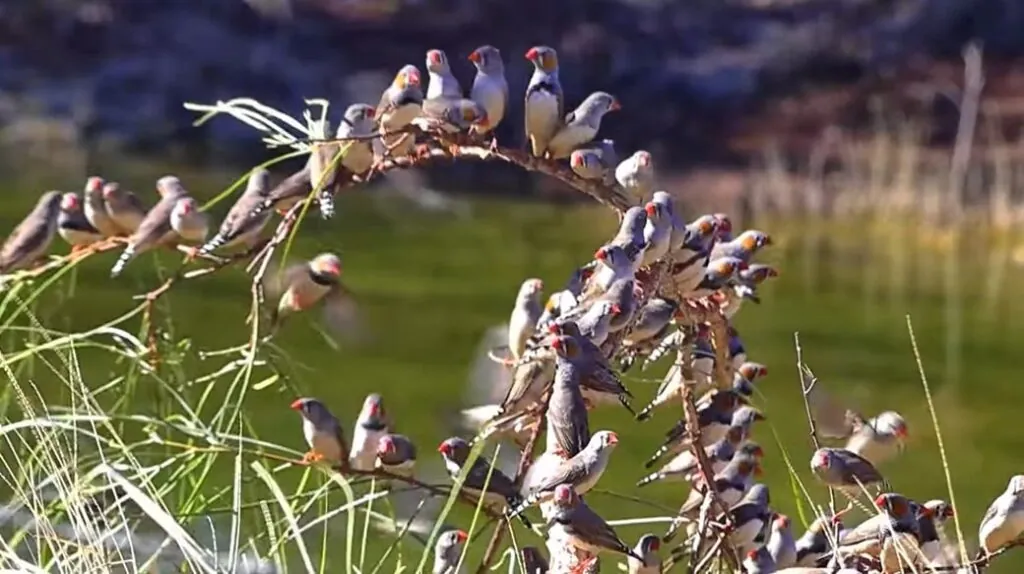
Geographic Range
In conjunction with the zebra finch distribution, they boast a stretched spread throughout the globe, chiefly living in the Australian mainland and the Lesser Sunda Islands – Timor and surrounding islands. Nonetheless, within Australia, they’re absent from Cape York Peninsula and coastal areas overpowered by dense rainforest.
Population Dynamics
The zebra finch population is somewhere betwixt 10 and 100 million, gracing our planet. Population dynamics feature regional differences, with variations observed in response to environmental factors, such as rainfall and food accessibility. As the bald eagle soared majestically above the North American wilderness, its regal silhouette contrasted against the vast sky, while below in the Australian grasslands, the zebra finch.
Geography
| Continent(s) | Australia, Timor (island shared by Indonesia and East Timor) |
| Countries | Throughout Australia (except Cape York Peninsula and some coastal areas), Indonesia (Timor), East Timor |
| Bio-geographical Realms | Australasian Realm |
| Biome | Dry grasslands, savannas, woodlands, semi-arid scrublands |
| Climate Zones | Tropical, subtropical, warm temperate |
Types of Zebra Finch
At present, 234 finch species have been discovered, but the zebra finch encompasses two species typified in its genus – Taeniopygia.
The very species had been previously categorized as one species but were split into two distinct species in 2016 by the IUCN.
Zebra Finch Bird Habitat
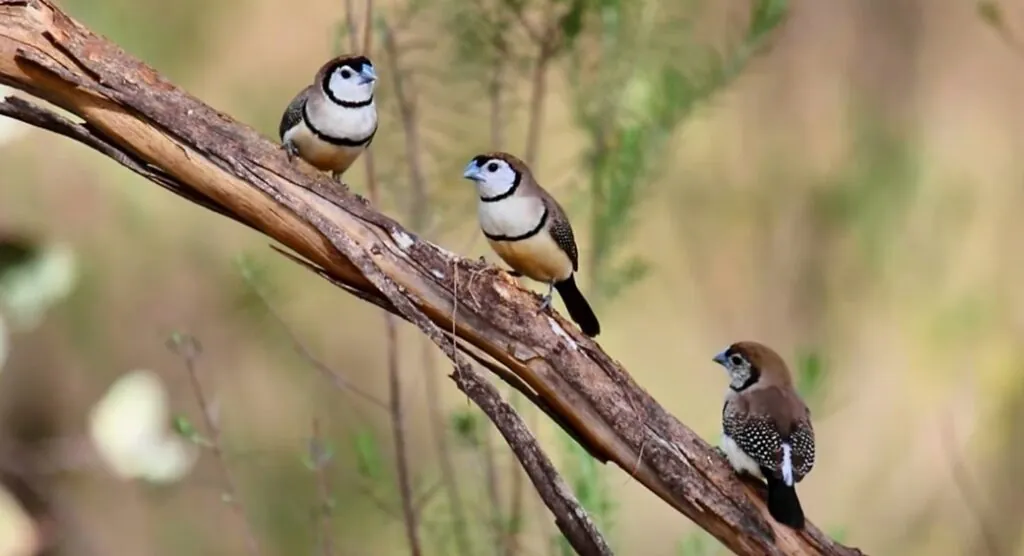
Habitat Preferences
As for as the zebra finch habitat is concerned, they’re the champions of arid and semi-arid landscapes, prospering in grasslands, savannas, open woodlands and semi-arid scrublands. Within their prioritized ecosystems, these species exhibit a preference for specific microhabitats, including grass clumps and water sources.
Habitat Utilization Patterns
Being the resident birds, they remain in their opted habitat year-round. Zebra finch birds inhabit social flocks, ranging from a few dozen to over 100 individuals. These flocks move together as they forage and roost, providing safety and boosted food-finding efficiency.
5 Zebra Finch Facts
Appearance
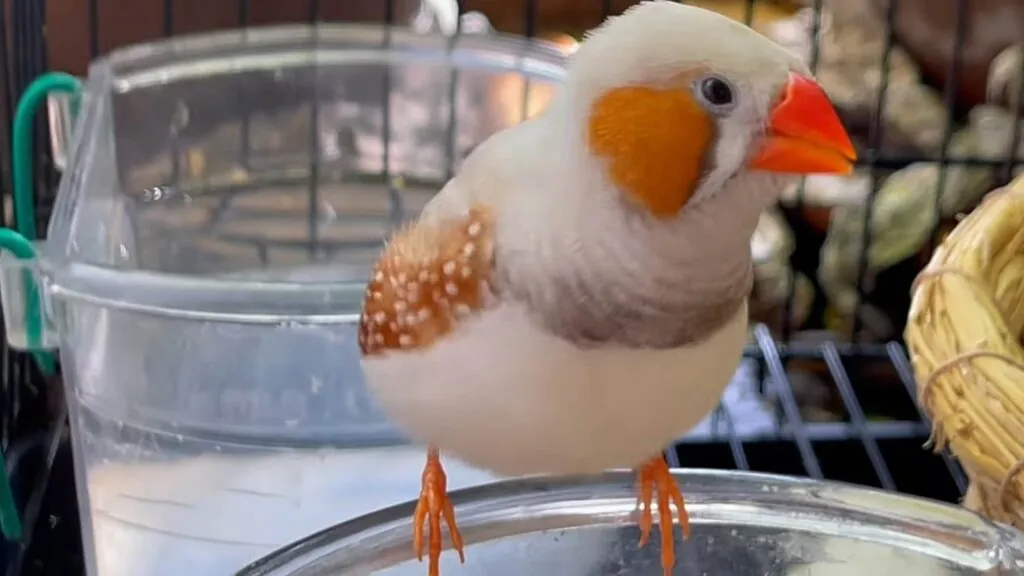
The zebra finch appearance is what makes it conspicuous and striking to the enthusiasts. Let’s dig deep into several aspects of its appearance.
Physical Characteristics
In the dynamic aviary, the cheerful melodies of the parakeet resonated alongside the playful chirps of the zebra finch, constructing a harmonious symphony of colors and sounds.
Sexual Dimorphism
There’re distinct differences in appearance between male and females zebra finches. What makes the male zebra finches prominent is their black and white stripes, orange cheek patches and a bright red beak. On the flip side, females are more muted in coloration with grey replacing the black stripes and a paler orange beak.
Zebra Finch Mutations
Zebra finches, the popular songbirds, exhibit an array to mutations that affect their feather color and pattern. Let’s delve into the realm their striking mutations.
Anatomy
| Color(s) | Males: Black, white, orange, brown (chest stripes, cheek patches) |
| Tongue | Short, fleshy, with small pointed tip |
| Claws | Sharp, curved claws on all four toes |
| Mouth | Small, with pointed beak |
| Jaw | Small, delicate jaw |
| Nose | Small, conical nostrils at base of beak |
| Feet | Small, delicate feet with four toes |
| Skeleton | Lightweight, bony structure with hollow bones for flight |
Reproduction and Life Cycles
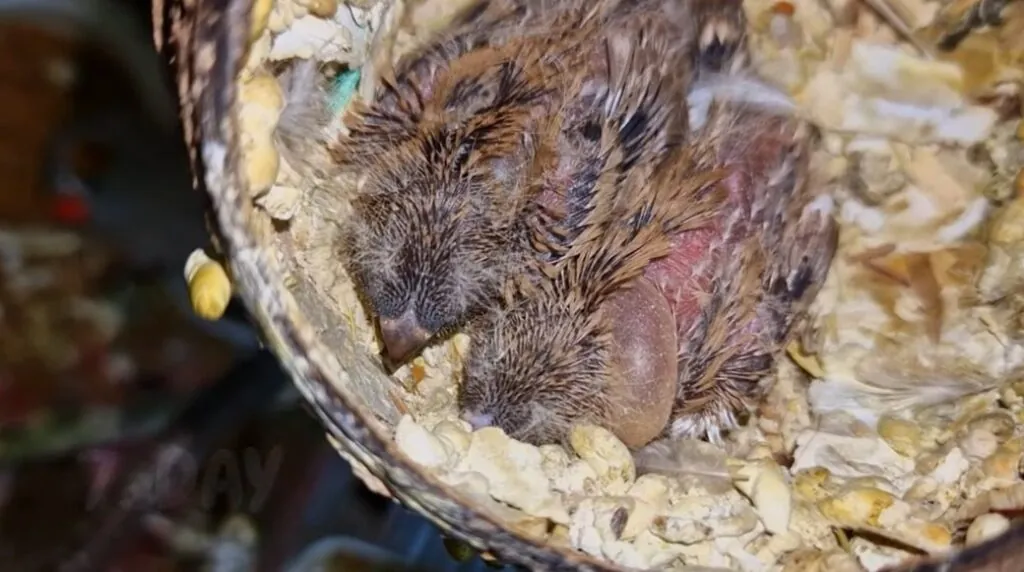
With respect to the zebra finch reproduction, there’re several aspects to be spotlighted, such as sexual dimorphism, pair bonding, breeding season etc. Let’s explore the in-depth insights.
Mating System
The zebra finch bird mating system isn’t strictly monogamous. Although they oftentimes construct strong pair bonds during the breeding season, their mating system tends to fall on a spectrum of monogamy (most common), polygamy and polyandry.
Reproductive Biology
These species are opportunistic breeders, where their season is dictated by environmental factors like rainfall and food abundance. They can breed year-round in favorable conditions.
Egg Laying
Once the nest preparation is over, the females lay a clutch of eggs. In terms of the zebra finch eggs, the typical clutch size ranges from 3 to 8 eggs, with the incubation period stretching from 12 to 16 days.
Life Cycle Stages
In the wild, the zebra finch lifespan is around 1 to 2 years in average, encountering numerous challenges like weather fluctuations, predation and resource scarcity; whereas in captivity, they can live up to 5 to 8 years.
Mating Habits
| Mating Behavior | Male sings and displays, mounts female for brief “cloacal kiss” fertilization |
| Reproduction Season | Year-round with peak in wet season (varies geographically) |
| Litter Size | 3-6 eggs per clutch, typically 2-3 clutches per year |
| Gestation Period | 12-14 days |
| Baby Carrying | Eggs incubated by both parents |
| Independent Age | Fledgling at 30-35 days, fully independent around 60 days |
Diet and Lifestyle
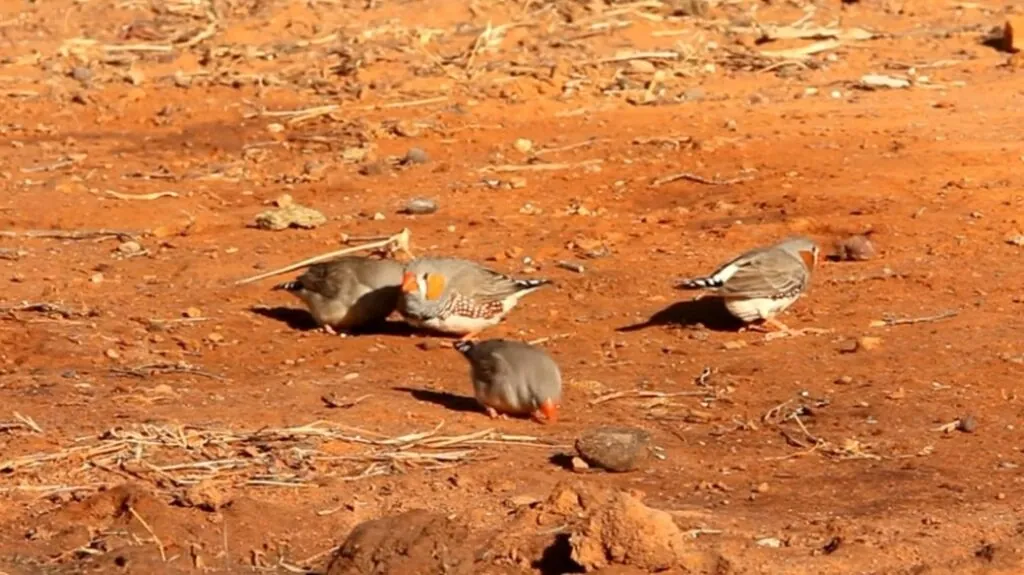
Feeding Ecology
Being chiefly herbivores, the zebra finch bird is classified as granivore. Their diet comprises grass seeds, fruits, grains and even insects – classifying them as secondary consumers to a small extent.
Foraging Strategies
The species are predominantly ground foragers, hopping and pecking at seeds scattered on the ground. They may hop onto low branches or shrubs to reach seeds and visit water sources to glean insects or sip at droplets. In addition, the zebra finch bird is diurnal, implying they’re most active in the course of the day.
Social Structure
These species are immensely social creatures, residing in flocks that can range from a few dozen to over 100 individuals. The zebra finch’s social life revolves around cooperative breeding (nest building, incubation and chick rearing) and communication (chirps, songs and calls).
Threats and Conservation
Conservation Status
As for as the zebra finch conservation status is concerned, it holds the fortunate title of “Least Concern” on the IUCN Red List of Threatened Species.
Primary Threats
Albeit their secure status, a gamut of factors pose potential threats to these creatures, such as habitat loss, climate change, introduced predators and disease (avian influenza and protozoan infections).
Relationship with Humans
Cultural Significance and Symbolism
In some Aboriginal communities, the zebra finch bird features in creation myths, tied to fire and the bringing of light. Additionally, in parts of Southeast Asia, this creature signifies love, loyalty and fidelity within relationships.
Media and Entertainment
The enchantment of the zebra finch bird has permeated a plethora of artistic mediums, inspiring both fictional creatures and documentaries, unfolding their striking real-life realities. Let’s have some examples from different genres: “Babe: Pig in the City” (1998), “Happy Feet” (2006) and “Rio 2” (2014) and “Birds of the Feather” (1985) by Richard Adams.
Economic Importance
In the annals of time, these birds were hunted for food in some regions, exclusively in parts of Australia and Indonesia. Nevertheless, this practice is no longer widespread and oftentimes thought unsustainable.
The creatures play an essential role in scientific research across an array of fields, including genetics, neurobiology and behavior. Their readily observable social interactions, swift breeding cycles and small genomes make them valuable model organisms.
Zebra Finches as Pets
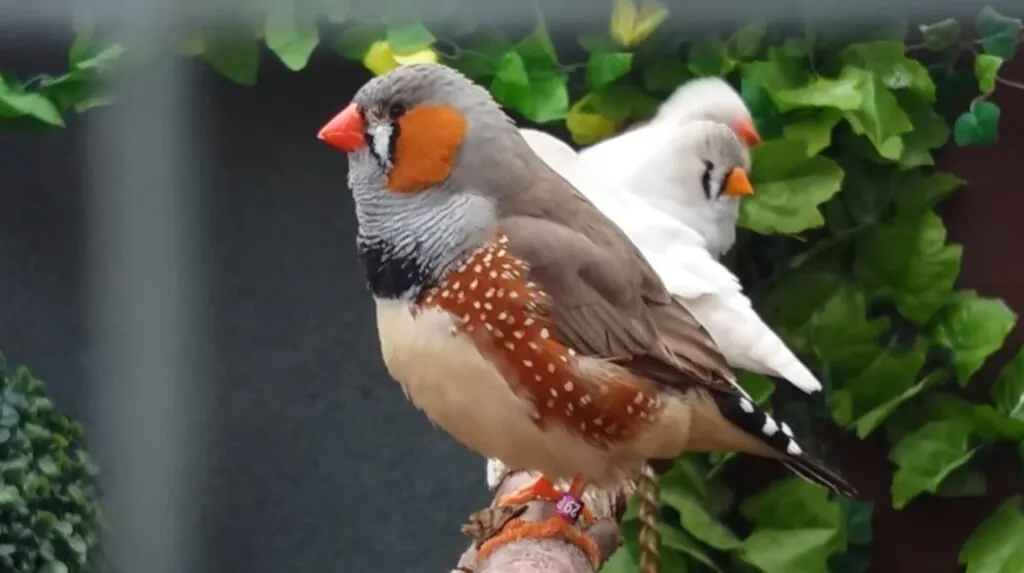
The zebra finch pets have captivated hearts and become popular companions in homes globally. Notwithstanding, before welcoming these creatures, it’s pivotal to digest the responsibilities involved and ensure their well-being.
The pros of keeping this bird as a pet include low maintenance, social interaction, relatively quiet and long lifespan. On the flip side, the challenges of zebra finch ownership encompass time commitment, specific care needs, veterinary care and escape risks.
Before welcoming a zebra finch, research extensively (social needs, dietary requirements and potential health concerns), prepare your home (spacious cage, hiding places and toys), find a reputable breeder and commit to their well-being. Learn more about zebra finches, their care, behavior and breeding on the PetMD.
Unique Characteristics
Forge a path through an intriguing journey as we unfold fascinating facts about dachshunds – truly captivating animals that start with D. Join us in shedding light on their remarkable rundown!
| Common Name | Zebra Finch |
| Other Name(s) | Z. Finch, Striped Finch |
| Number of Species | Monotypic (single species) |
| Population Size | Estimated 10-100 million individuals |
| Lifespan | 3-5 years in captivity, 1-2 years in wild |
| Weight | 5-12 grams |
| Length | 10-12 cm |
| Wingspan | 16-20 cm |
| Top Speed | Up to 60 km/h |
| Predator | Birds of prey, snakes, lizards, domestic cats |
| Prey | Seeds, grains, insects |
| Most Distinctive Feature | Black and white striped plumage, male’s orange cheek patches |
FAQs
